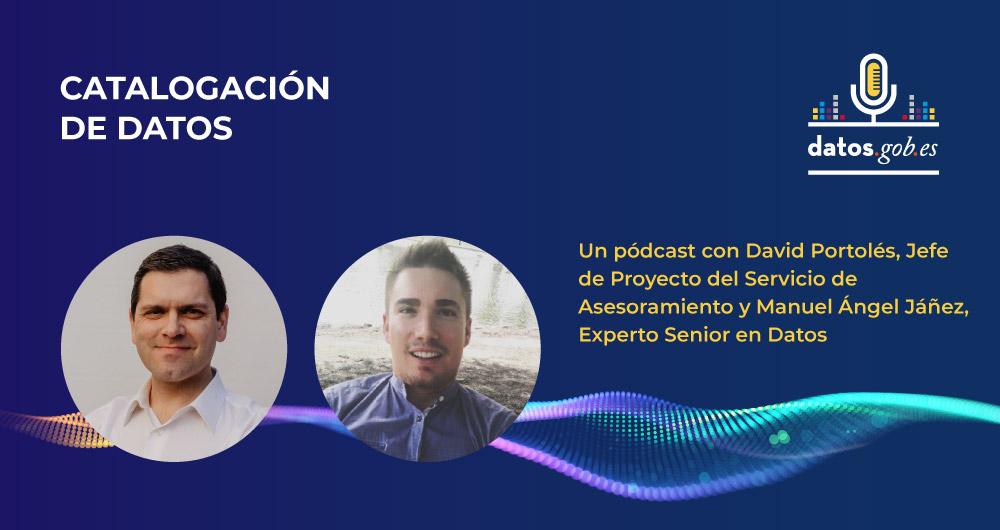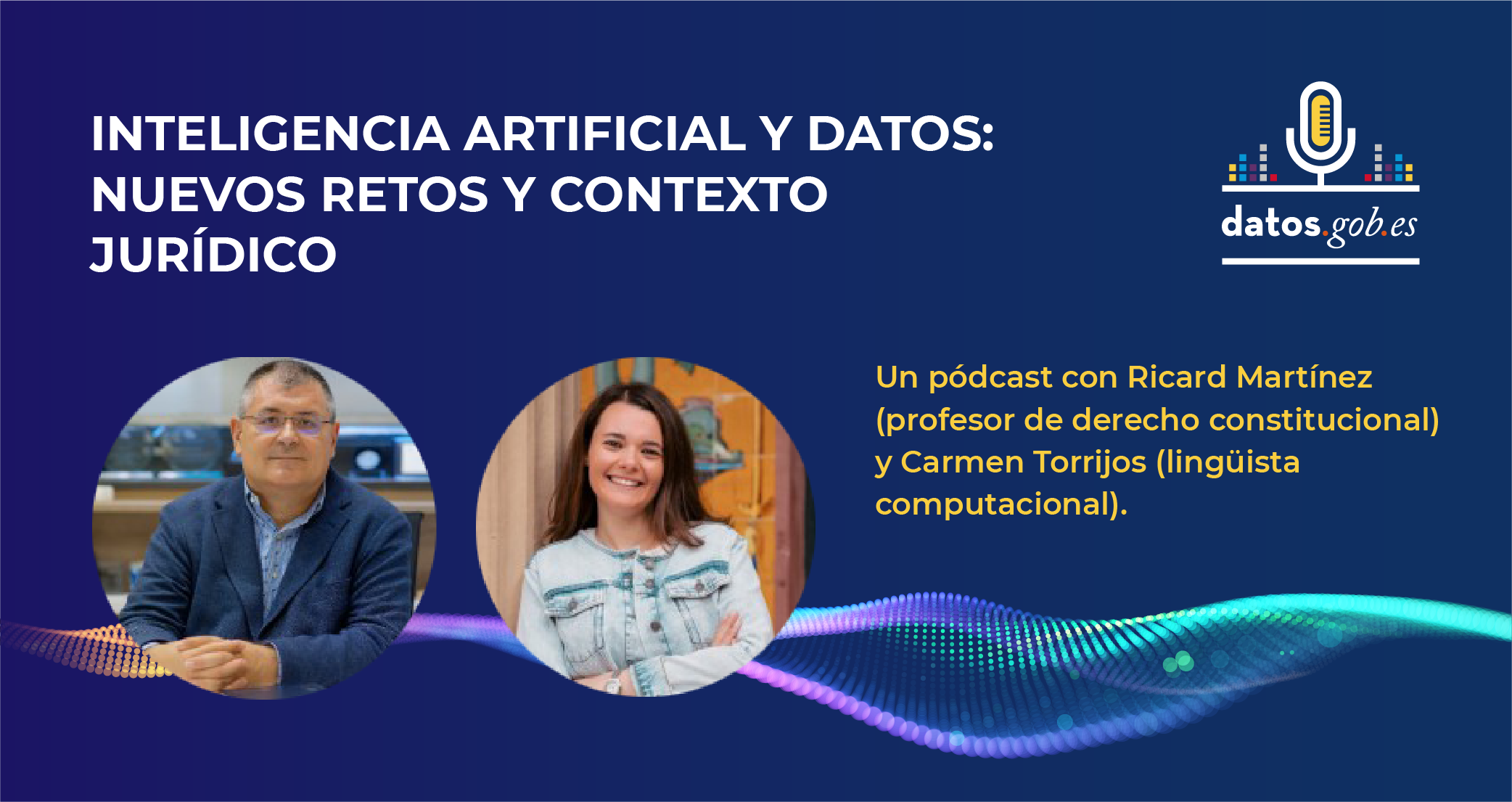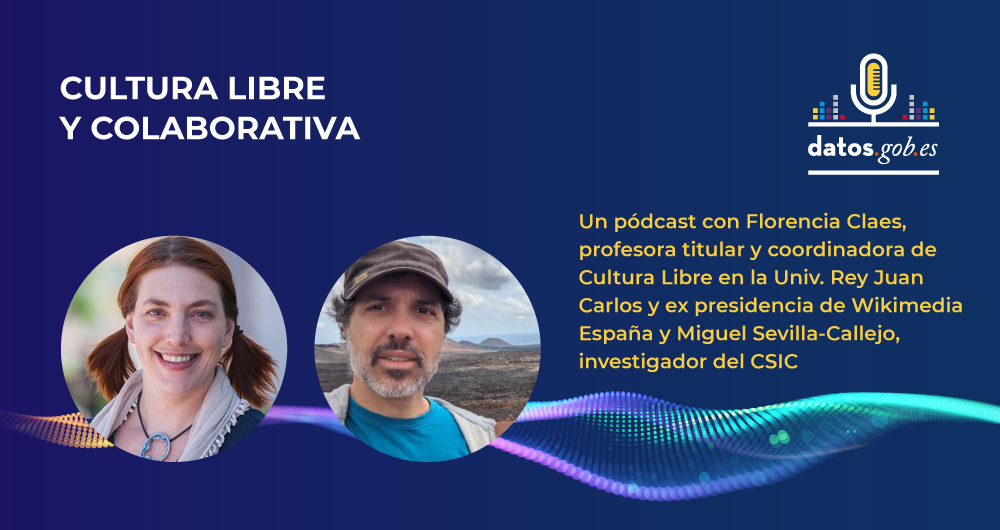
Do you know why it is so important to categorize datasets? Do you know the references that exist to do it according to the global, European and national standards? In this podcast we tell you the keys to categorizing datasets and guide you to do it in your organization.
- David Portolés, Project Manager of the Advisory Service
- Manuel Ángel Jáñez, Senior Data Expert
Listen to the full podcast (Spanish)
Summary of the interview
-
What do we mean when we talk about cataloguing data and why is it so important to do so?
David Portolés: When we talk about cataloguing data, what we want is to describe it in a structured way. In other words, we talk about metadata: information related to data. Why is it so important? Because thanks to this metadata, interoperability is achieved. This word may sound complicated, but it simply means that systems can communicate with each other autonomously.
Manuel Ángel Jañez: Exactly, as David says, categorizing is not just labeling. It is about providing data with properties that make it understandable, accessible and reusable. For that we need agreements or standards. If each producer defines their own rules, consumers will not be able to interpret them correctly, and value is lost. Categorizing is reaching consensus between the general and the specific, and this is not new: it is an evolution of library documentation, adapted to the digital environment.
-
So we understand that interoperability is speaking the same language to get the most out of it. What references are there at global, European and national level?
Manuel Ángel Jáñez: The way to describe data is in an open way, using standards or reference specifications, of frames.
-
Globally: DCAT (a W3C recommendation) allows you to model catalogs, datasets, distributions, services, etc. In essence, all the entities that are key and that are then reused in the rest of the profiles.
-
At the European level: DCAT-AP, the application profile in data portals in the European Union, particularly those corresponding to the public sector. This is essentially what is used for the Spanish profile, DCAT-AP-ES.
-
In Spain: DCAT-AP-ES, is the context in which more specific restrictions are incorporated at the Spanish level. It is a profile based on the 2013 Technical Standard for Interoperability (NTI). This profile adds new features, evolves the model to make it compatible with the European standard, adds features related to high-value sets (HVDs), and adapts the standard to the present of the data ecosystem.
David Portolés: With a good description, the reuser can search, retrieve and locate the datasets that are of interest to them and, on the other hand, discover other new datasets that they had not contemplated. The standards, the models, the shared vocabularies. The main difference between them is the degree of detail they apply. The key is to reach the compromise between being as general as possible so that they are not restrictive, but, on the other hand, it is necessary to be specific, it is necessary that they are also specific. Although we talk a lot about open data, these standards also apply to protected data that can be described. The universe of application of these standards is very broad.
-
Focusing on DCAT-AP-ES, what help or resources are there for a user to implement it?
David Portolés: DCAT-AP-ES is a set of rules and basic application models. Like any technical standard, it has an application guide and, in addition, there is an online implementation guide with examples, conventions, frequently asked questions and spaces for technical and informative discussion. This guide has a very clear purpose, the idea is to create a community around this technical standard, with the purpose of generating a knowledge base accessible to all, a transparent and open support channel for anyone who wants to participate.
Manuel Ángel Jañez: The available resources do not start from zero. Everything is aligned with European initiatives such as SEMIC, which promotes semantic interoperability in the EU. We want a living and dynamic tool that evolves with the needs, under a participatory approach, with good practices, debates, harmonisation of the profile, etc. In short, the aim is for the model to be useful, robust, easy to maintain over time and flexible enough so that anyone can participate in its improvement.
-
Is there any existing thematic implementation in DCAT-AP-ES?
Manuel Ángel Jáñez: Yes, important steps have been taken in that direction. For example, the model of high-value sets has already been included, key for data relevant to the economy or society, useful for AI, for example. DCAT-AP-ES is inspired by profiles such as DCAT-AP v2.1.1 (2022) that incorporates some semantic improvements, but there are still thematic implementations to be incorporated into DCAT-AP-ES, such as data series. The idea is that thematic extensions will enable modelling for specific datasets.
David Portolés: As Manu says, the idea is that he is a living model. Future possible extensions are:
- Geographical data: GeoDCAT-AP (European).
- Statistical data: StatDCAT-AP.
In addition, future directives on high-value data will have to be taken into account.
-
And what are the next objectives for the development of DCAT-AP-ES?
David Portolés: The main objective is to achieve full adoption by:
-
Vendors: To change the way they offer and disseminate their metadata relative to their datasets with this new paradigm
-
Reusers: that integrate the new profile in their developments, in their systems, and in all the integrations they have made so far, and that they can make much better derivative products.
Manuel Ángel Jáñez: Also to maintain coherence with international standards such as DCAT-AP. We want to continue to be committed to an agile, participatory technical governance model aligned with emerging technologies (such as protected data, sovereign data infrastructures and data spaces). In short: that DCAT-AP-ES is useful, flexible and future-prepared,
Interview clips
1. Why is it important to catalog data?
2. How can we describe data in open formats?


